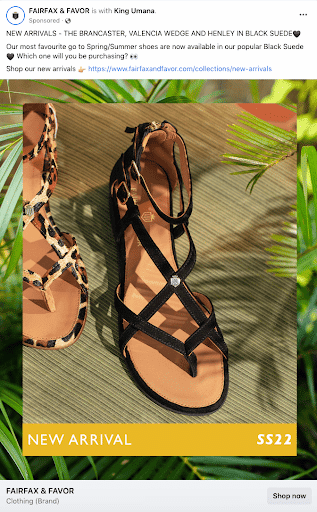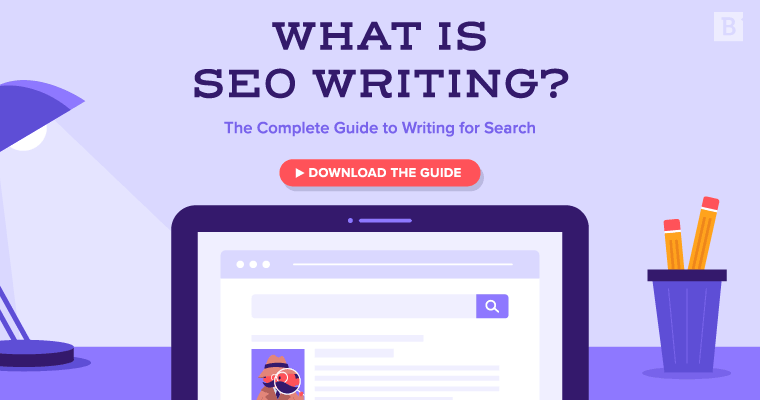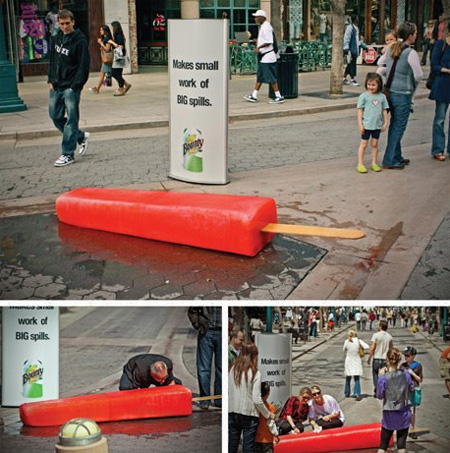All marketing has three core elements:
- Content: This is the medium your message takes. Examples include print ads, TV commercials, digital ads, blog posts, videos, flyers in the mail, social media posts, emails, speeches, etc.
- Distribution channels: This is the platform where you share the message. Examples include magazines, TV channels, webpages on the world wide web, search engines, the U.S. Postal Service, social networks, an email service provider, a street corner.
- A marketing strategy: This is the premeditation of what you want to say, why you want to say it, how you want to say it, to whom, when, on what marketing channels and with what types of content.
15 Types of Advertising
Like music notes, the number of ways those 3 elements can play out is nearly endless. There are so many types of product advertising born from these basic components – definitely more than can fit in one listicle.
But if we had to pick the 15 greatest hits of our time, this is what they would be:
- Video Advertising
- Online Advertising
- Print Advertising
- Outdoor Advertising
- Mobile Advertising
- Content Marketing
- Search Engine Marketing
- Social Media Advertising
- Call-to-Action Marketing
- Direct Marketing
- Account-Based Marketing
- Guerilla Marketing
- Marketing Automation
- Public Relations
- Event Marketing
Let’s take a deeper dive into what each is all about.

A Few Terms To Be Familiar With First
- Inbound marketing: Involves creating solutions or content that is non-interruptive. The goal is to draw customers into engagements with your brand through organic means such as creating a blog that provides tips and tricks.
- Outbound marketing: Also known as interruptive marketing (or push marketing), this is all about actively reaching out to customers to make them aware of your product or service. Some examples we’ll cover in this post include TV commercials, direct email and digital advertising.
Explaining Advertising
Advertising is what most people think about when they think about marketing: a TV commercial, a YouTube ad, a print ad in a magazine, an ad during a podcast, ads you might see on the subway, billboards on the highway, digital banner ads on the side of a news article and any other campaign where you paid someone to publish, print, display or air your ad.
Think of advertising as an imposition on your attention.
Ads kind of follow you around and actively try to get you to notice them. That’s why advertising is often called “interruption marketing”. To avoid these interruptions, you might find yourself taking evasive measures – like muting the TV or changing channels during the commercial break, hitting the fast-forward 30 seconds button on a podcast and using an adblocker while browsing the web.
So why advertise?
Because it can be great for brand awareness, and it can be useful to target an audience that has already shown interest in your brand (that’s why, for instance, you might see banner ads for discount boots on websites after you’ve been shopping for them).
The downside of advertising is that you’re sure to be paying money every time you get your content in front of an audience (e.g., a Google ad). In this sense, it’s less cost-effective over the course of a campaign than a well-executed organic content marketing effort. Marketers often allocate a fraction of their total budget to advertising to capture time-sensitive traffic.
1. Video Advertising
If you’ve ever watched a YouTube video, you’ve probably seen a video ad played either before, during or after the video you clicked on. This form of media advertising is similar to TV ads, but generally much briefer. They do accomplish the same task, though: They tell a story that promotes a product or service.
Video ads aren’t limited to YouTube. They can be placed (almost) anywhere there’s media advertising on the internet.
2. Online Advertising
Online advertising is a catch-all term for any advertising media on the internet. Many other types of advertising on this list are subtypes of online advertising.
3. Print Advertising
Print advertising is the predecessor to online and media advertising, but it’s far from obsolete. Print ads can be placed in magazines, newspapers, brochures or fliers. This is also where you’ll see a display ad every now and again — large advertisements with eye-catching illustrations. Newspaper advertising has been around for a very long time, but it still has its uses.
4. Outdoor Advertising
If an ad is outdoors, it’s outdoor advertising. Billboards, buses, benches, taxis and signage are all common places to put outdoor ads.
5. Mobile Advertising
Take a look at your smartphone or tablet and you’ll quickly notice mobile advertising. They can be, well, anywhere: banner ads, app stores, news articles, social media, text messages — if you see it on a mobile device, it’s mobile advertising.
6. Content Marketing
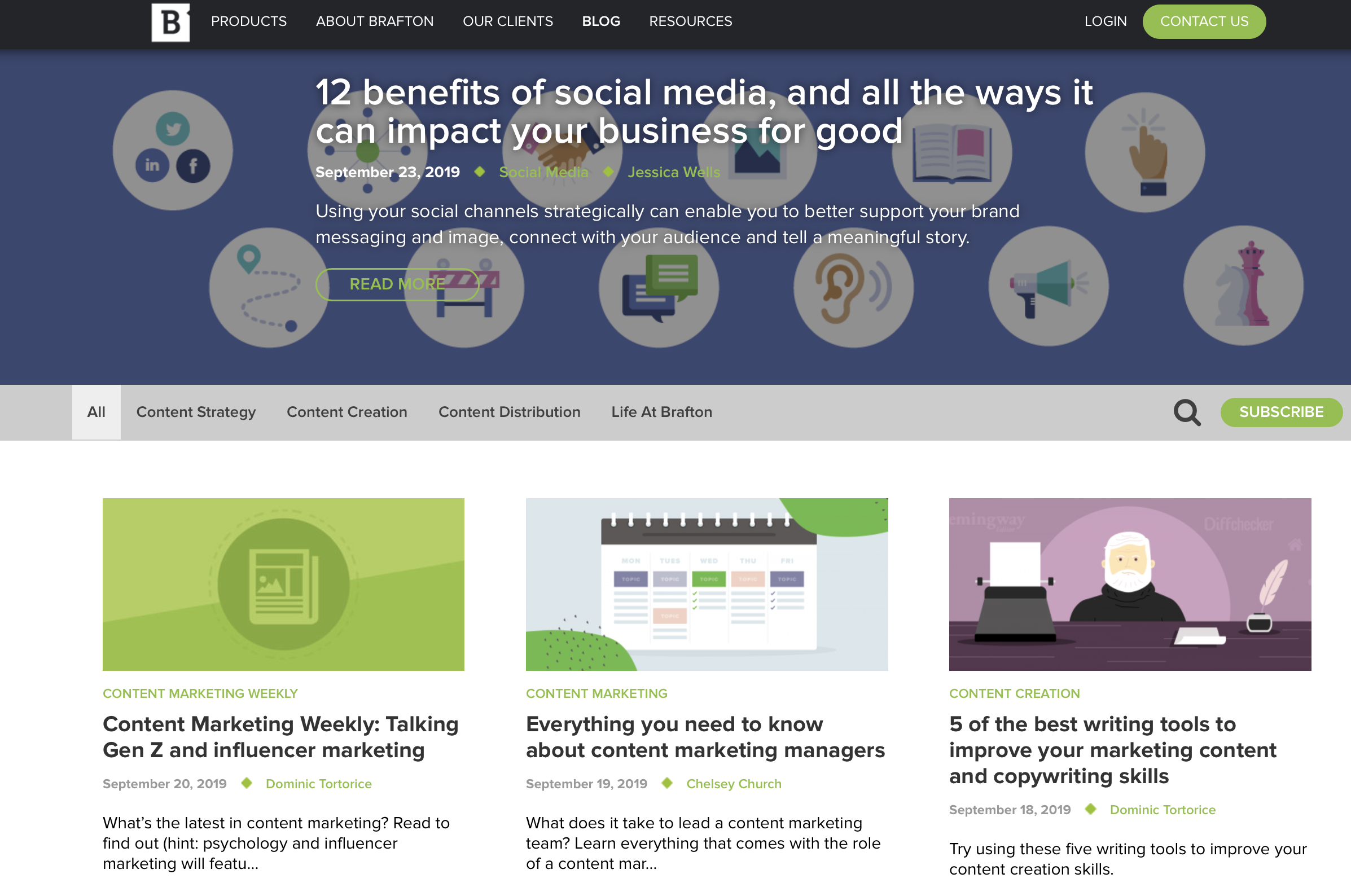
Unlike advertising, the purpose of content marketing is to create content that’s so valuable to a target audience that they’ll seek it out. Where do most people go when they’re seeking out content?
The internet – and specifically a search engine.
That’s why content marketing and search engine optimization (SEO) are often conflated.
Technically, they’re a little different.
Content marketing is the development of original high-quality content that a target audience will find useful, and that isn’t overly promotional. This includes blog posts, podcasts, how-to-videos, original research, infographics, eBooks, white papers, free online tools and other non-interruptive marketing efforts.
SEO is about making this content more discoverable on search engines: It improves the odds that your target audience will discover your webpages when they search for questions and information that your brand has answered through digital content.
Content marketing and SEO both fall under the umbrella of digital marketing, which is why you may hear them imprecisely referred to as online marketing/internet marketing.
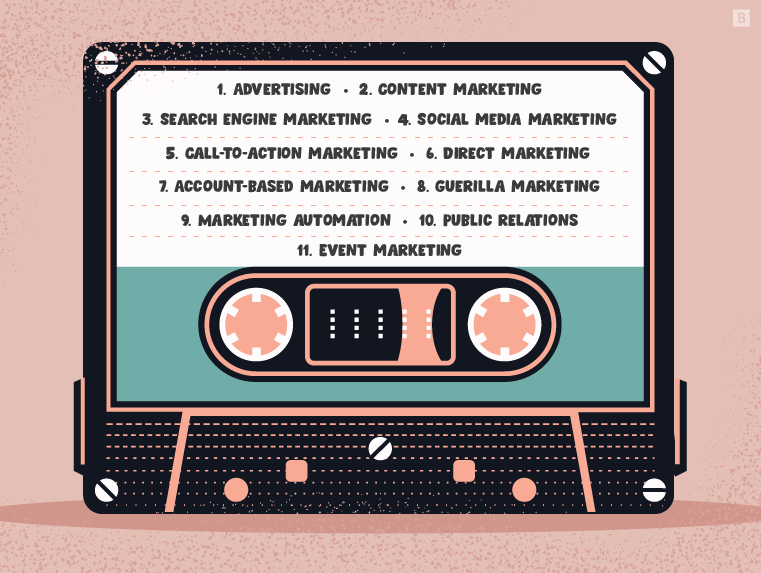
The core benefit of content marketing is that it gets people on your website, where you can further engage them – for instance, by encouraging them to sign up for your newsletter or to download additional resources in exchange for an email address. Great content also gives other sites something to link back to, which can help improve your site ranking.
Content is the cornerstone of any digital marketing strategy.
7. Search Engine Marketing
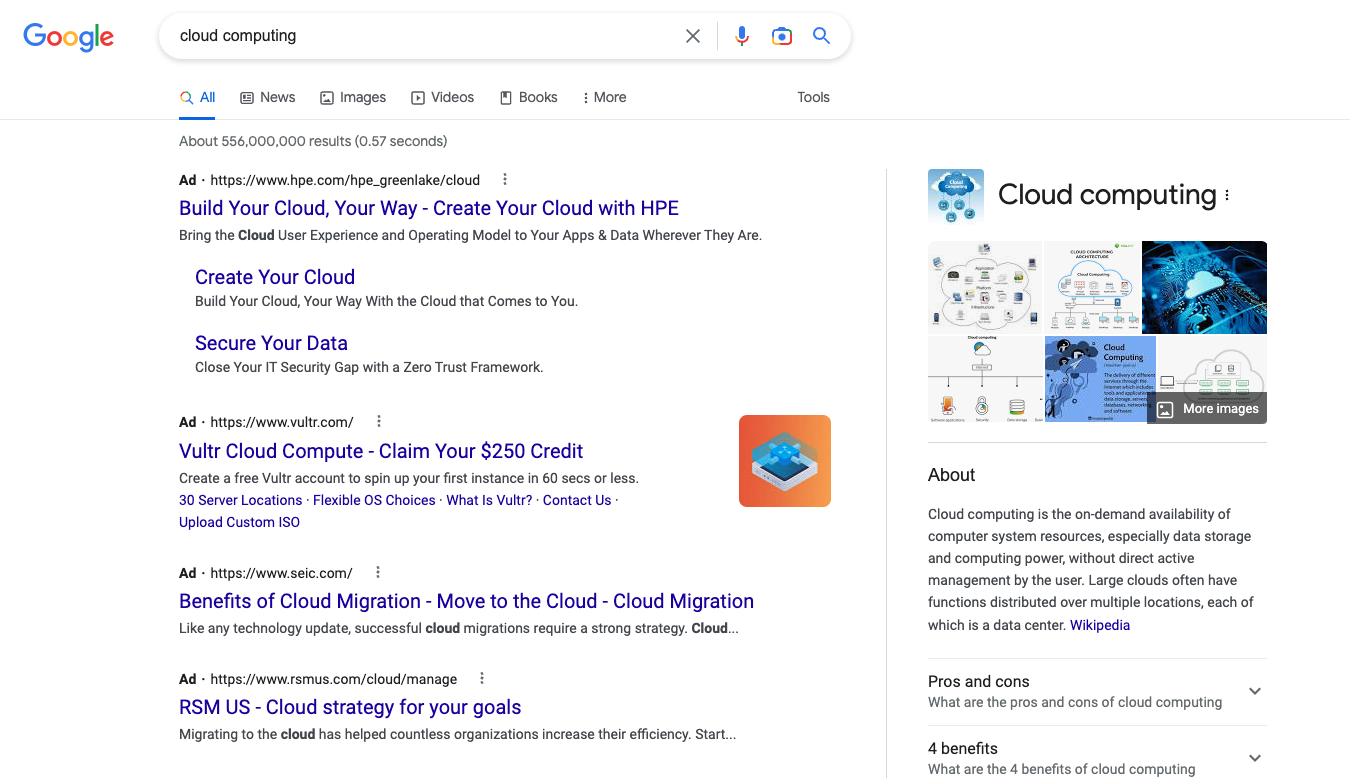
Think of search engine marketing (SEM) as the paid version of content marketing. It mostly consists of pay-per-click advertising using Google Ads.
The basic idea is that businesses pay Google a certain dollar amount each time someone clicks on a paid search result. Those paid search results are clearly labeled as ads (see the example above), which means that they tend to be clicked on less than organic results (results that do not say “Ad” next to them).
The thing to remember about SEM is that you need content on the other end of every banner ad and paid search result.
At a high level, SEM is just one type of digital advertising. Other ways to advertise on the web include:
- Social media ads.
- Ad distribution networks that post a banner on relevant sites.
The thing to remember about SEM is that you need content on the other end of every banner ad and paid search result. As such, SEM is most valuable as a supplement to a larger content marketing strategy.
8. Social Media Advertising
Social media advertising is exactly what it sounds like: the use of social media platforms to distribute unpaid content, like in the example above, or paid content, like this paid ad on Facebook:
The benefit of social media channels include:
- Billions of people use it.
- You can promote your brand and its content for free on social media.
- You can turn satisfied customers into brand advocates on social media with user-generated content campaigns (think of this as a cost-effective form of influencer marketing where you encourage positive interactions with your brand on social networks).
- There are many social media channels, and you can focus your attention more on the ones that matter most to your target market (Gen Z loves SnapChat and Instagram, for instance).
Under the umbrella of social media advertising, there’s also viral marketing and interactive marketing. These sub-disciplines use a social media platform to amplify a brand’s ideas, actively engage followers and generate differentiation from more traditional forms of marketing material (like static images or snippets of text).
Social media is especially fond of native advertising — meaning ads that “blend in” with their surroundings to mimic real posts. Sometimes, the only way to tell native ads from real posts is to look somewhere around it for something that specifies it as an ad. Somewhere on the post will be displayed something like “advertisement,” “sponsored” or “promotion.”
9. Call-to-Action Marketing
A call to action (CTA) is a prompt to get anyone reading your content to take a desired action. These CTAs can live on your homepage, be embedded in a blog post or the end of an email, included in a social media post, etc.
They typically use action language, like:
- Find out how.
- Get your free quote.
- Discover more savings.
- Take the virtual tour.
- Sign up for a free consultation.
- Subscribe.
- Download the eBook.
They can be presented as buttons that live in fixed parts of your site – like so:
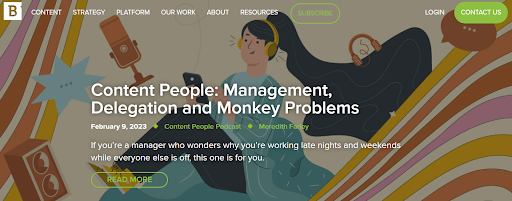
They can be form fields on the landing page of downloadable marketing collateral:
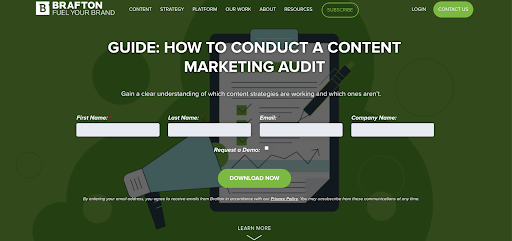
Or they can be scroll activated pop-up boxes:

You can even include CTAs in your blog copy as anchor text.
The goal is to get a user to take an action, like providing an email in exchange for reading an eBook or a white paper.
That action should lead to deeper engagement with your brand. By capturing an email, for instance, you put that lead on a track for email marketing efforts.
In this sense, CTA marketing is a critical component of inbound marketing strategies where the goal is to lead users deeper into the sales funnel, and prime the pump for a conversation.
Optimizing CTAs for maximum impact requires market research and A/B testing to ensure readers are performing desired actions — it’s a recurring activity that evolves with every campaign, page and audience.
10. Direct Marketing
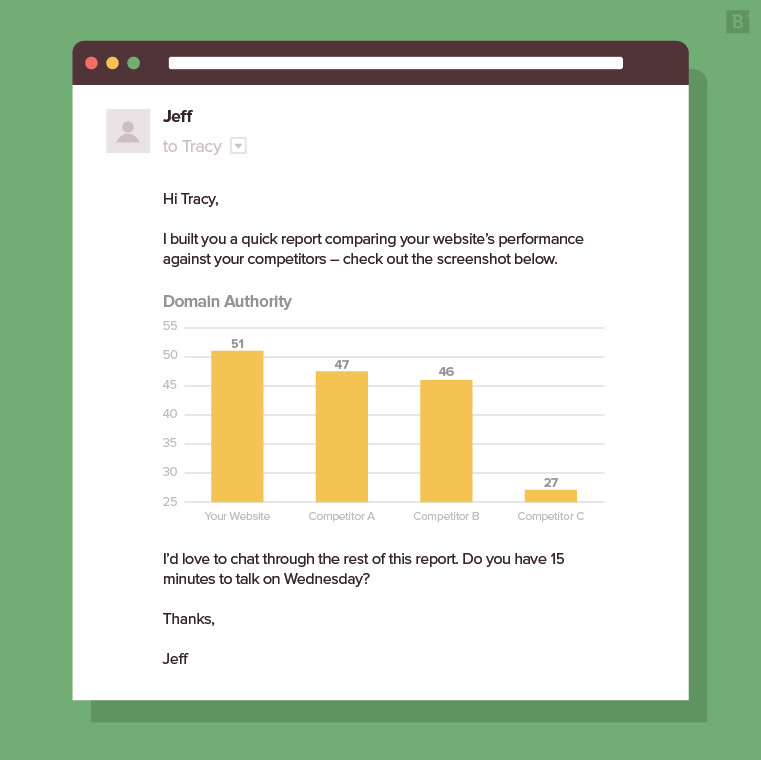
Direct marketing, sometimes called one-on-one marketing, is a direct proposal. It can be a proposal for a trial, or in the case of the example above, just a conversation.
Technically, direct marketing falls under the umbrella of outbound marketing. Tracy, for instance, might be a regular reader of the Brafton newsletter, but she didn’t log onto her email that morning expecting to receive a personalized analysis of her site’s domain authority followed by a request for a call. It may be a little more, say, direct than she’s used to.
Nevertheless, direct marketing has its place in inbound marketing. It’s possible, for instance, that Tracy downloaded, say, an eBook we wrote about building domain authority. In that case, she’s an inbound lead that has been primed, making her an ideal prospect for a more direct approach.
Other examples of direct marketing are in the mail – like those “you’re pre-approved” credit card offers, and cold calling a list of leads.
In a vacuum, direct marketing comes across as aggressive and spammy. But when well timed as part of a bigger marketing plan, it can be the push that gets a prospect to become a customer.
11. Account-Based Marketing

Account-based marketing is simply any marketing campaigns that target specific accounts. In the example above, GumGum – a computer vision technology company – was trying to close a deal with T-Mobile. They were so invested, that they hired a creative team to create a comic book inspired by the partnership of the two brands.
It’s incredibly unconventional, but it supposedly got the attention of T-Mobile’s CEO.
The gamble with account-based marketing is that it might not work. And if the campaign is too narrow in scope – say, like a comic book about T-Mobile – it runs the risk of being a wasted investment if the target ultimately gets away.
That’s why, when creating ABM campaigns, it’s always better to base them around personas as opposed to one specific customer if at all possible. You can reuse that content if it isn’t overly specific.
ABM is becoming a gold standard in B2B marketing, as brands aim to better leverage their personas and align with sales teams. As a marketing activity, ABM is very high-risk, high-reward, so it requires careful planning, strategic hands and full buy-in.
12. Guerilla Marketing
Guerilla marketing is basically just any type of unconventional marketing that’s meant to generate publicity for a brand.
It can be a clever, attention-grabbing ploy like the Bounty popsicle or this Frontline ad:

Generally speaking, the more unexpected and surprising the tactic, the better. At its best, guerilla marketing inspires people to take to social media and gets bloggers, magazines and news outlets talking about the crazy-cool thing your brand did.
Guerilla marketing is not to be confused with experiential marketing. They’re similar in that they tend to be highly creative and attention-grabbing. However, the latter is a little more experience oriented. An example would be Refinery 29’s 29 rooms:
Guerilla (and experiential) marketing doesn’t have to be super expensive. However, it does require resourcefulness, and cautiousness not to end up on the wrong side of the law (especially if you plan to paint on things that don’t technically belong to you).
Guerilla marketing inspires people to take to social media and gets people talking about the crazy-cool thing your brand did.
13. Marketing Automation
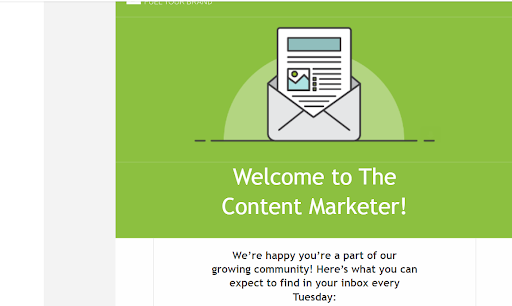
Marketing automation is basically the practice of automating certain marketing tasks. An example is the automated email we send out to users who sign up for our newsletter.
Popular in both B2B and B2C marketing, a marketing automation platform can improve segmentation (creating lists of recipients) by programming certain messages to send out to certain leads at a very particular time and day.
Marketing automation was made for email marketing and digital advertising.
The idea is that certain content is sent to or displayed for certain users based on their content consumption habits. Said habits are recorded within a tool like Pardot or Marketo. Ideally, you’ll know exactly what post the email contact was reading when they first gave you their information, and what, if any, marketing collateral they’ve downloaded since then. With content and email sends that are more personalized to each user, automation helps deliver better customer experience for new and existing customers alike.
Email drip campaigns are good examples of marketing automation. The contents of each message are based entirely on the recipient’s interaction with the previous message. This ensures that the next message a recipient sees is the message that is most likely to get them engaging with your brand.
If you have any aspirations of launching an email marketing campaign and improving the precision of your interactions with leads as you go deeper into the sales funnel, you’re going to need marketing automation resources.
14. Public Relations
Public relations is any attempt by a brand to maintain a favorable image for its audiences regardless of what might be happening. For example, Ikea’s “Stay Home” campaign during the height of the COVID-19 pandemic.
Public relations isn’t reserved just for the Ikeas of the world, though.
Small businesses also need PR. For instance, how they communicate with their customers and their business partners following a data breach is important to their recovery as an organization.
And PR doesn’t necessarily have to follow a disaster. Highlighting your charitable exploits in a blog post is an opportunity to earn some positive publicity. So is attending local events in the community and publishing a press release when your brand is recognized by an industry magazine.
Anything you can do (within your means) to earn positive media attention will ultimately help your brand. In this way, PR is really brand marketing, as it’s focused solely on the awareness, credibility and reach of the brand.
15. Event Marketing

Last but not least, event marketing is all the marketing and promotion efforts you take before, during and after an event.
Maybe it’s an event you’re hosting, like an industry conference, a lunch-and-learn or even a live webinar. When done right, a really well-executed event is its own form of marketing. But you need to actually have an audience at that event in the first place.
Start by creating a landing page for that event, and promoting it on your blog, through social media channels and via email.
Also consider live-Tweeting or posting on other social channels. Once it’s over, create a blog post (or multiple posts) summarizing some of the highlights.
The same applies if you’re participating in someone else’s event or partaking in a well-known industry conference, and want to make sure people know you’ll be there.
You don’t necessarily have to be giving a keynote address, either. Even if you’re just going to learn and network, share your experiences with other people on your blog and through social media (like we did when we went to MozCon and Content Marketing World). It also helps to have something to hand out during the event. These could be limited-time promos and coupons, company swag boxes, a brochure or – at the very least – a business card.
Did We Snub Your Favorite Type of Marketing?
It’s possible. Entire books have been written about marketing strategies.
But this was hopefully a good primer as you wade deeper into the world of marketing.
And we’re certainly open to hearing about other types of marketing that belong on this list. Feel free to share your thoughts in the comments section below.
Editor’s Note: Updated February 2023.
